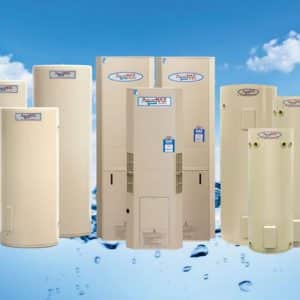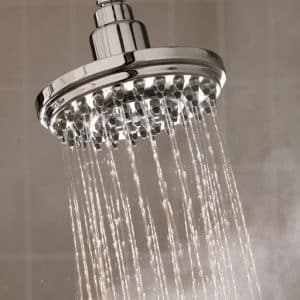
4 Advantages of an AquaMax Hot Water System
If you are looking for a hot water system that

Keeping your home warm during the colder months requires finding the right indoor gas heater to do the job. But while all gas heaters work towards heating your home, not every space can be warmed by a single type. There are a few points to consider to finding the right heater for you, including selecting the correct size, flued or unflued and the type of heater. This guide covers all these aspects to help you decide on the right appliance.
There are many energy source options to choose from for indoor heating. Aside from natural gas, there are electric, solar, and heat pump options. For example, if you already have solar panels installed, it is much more cost-effective to rely upon electric heating than gas to keep your home warm. However, gas heaters are used by more Australians compared to any other energy source for the following reasons.
1. Gas is Cheaper to Run
Indoor gas heating carries cheaper running costs than electricity. This is because gas heaters produce more heat output than electric heaters and, as a result, cost less overall by being able to heat your space quicker with less energy.
2. Is More Reliable
An added benefit of gas is that it is a reliable heat source. Unlike solar, which is at the mercy of the sun or electric, which is vulnerable to power outages, gas is unaffected by either and will keep you warm regardless of the weather or power grid.
3. Greener Energy Source
Natural gas indoor heaters are more energy-efficient than electric. As electric heaters rely upon electricity generated through burning coal, gas appliances are a low-emission alternative that reduces greenhouse gas contributions. The Department of Environmental Natural Greenhouse Accounts Factors further states that natural gas appliances produce 83% fewer emissions than coal, making gas the green thumb option over electric heaters.
Size: One Doesn’t Fit All
After deciding gas is the right option, determining the size you need is the next step. Depending on the available space, the gas heater’s warming capacity will need to be considered to prevent overspending on a larger heater with higher running costs when a smaller heater can heat the room just the same. Or vice versa, by underspending on a heater too small to warm up a larger space.
It’s important to note that for roughly every 10 square metres, 1 kWh heat output is needed to warm the room. However, not every room space is built the same, so it is necessary to consider how many rooms you’re planning to heat if your house is insulated, window size, and ceiling height. Below is a size guide to help you select which size you need for your space.
Main Difference Between the Two
Gas heaters can be categorised into two main types, flued or unflued. In short, a flue is a duct or pipe that removes gas from inside your home and directs it outdoors. Having a flue keeps your home well ventilated and prevents a build-up of carbon monoxide, which is toxic in high concentrations.
Unflued gas heaters, also known as portable gas heaters, don’t have any feature to carry away harmful combustion by-products. Like with any appliance, there are both advantages and disadvantages to each.
Unflued (Portable) Gas Heaters
Pros:
· Manoeuvrable: can be repositioned easily around the house depending on the room you wish to heat.
· Cheaper: unflued gas heaters cost less upfront than flued heaters.
· Instant heat for medium-sized rooms: are more efficient at providing heat to a room than if you were using three standard electric heaters.
Cons:
· Health risk: the lack of flue presents a carbon monoxide poisoning risk as emissions are not vented out of the room
· Illegal in bedrooms and other small rooms: in poorly ventilated areas or smaller rooms, you must use a flued gas heater; otherwise, it needs to be an electric heater.
· Risk of mould formation: water vapour from the combustion process can cause an increase of mould on walls and ceilings when it condenses.
· Gas has to be bought from a supplier: whereas with electricity, you can generate it at home without going to a supplier and purchasing it.
Flued Gas Heaters
Pros:
· Same heating efficiencies mentioned above also apply.
· Good ventilation: the flue prevents fumes from building up inside and requires fewer preventative measures when using a portable gas heater.
· Programmable: unlike portable, flued gas heaters can be set to timers and specific temperatures.
Cons:
· More expensive: flued gas heaters have higher upfront costs for purchasing and installation than unflued.
· Risk of harmful emissions still exists: although the risk is considerably lower than unflued, escaping emissions can still occur if the heater is faulty or poorly maintained.
· Some heat is lost: because heat can escape via the flue, this gas heater is less energy efficient than unflued.
Indoor gas heating is available in many different methods and designs, all of which come down to personal preference.
At the end of the day, deciding on a gas heater is dependent on the following factors. If you’re focused on price and cost savings, unflued (portable) gas heaters are most likely the choice for you. Whereas, if you value heating efficiency across the whole house then you are better off selecting a flued gas heater. Other factors like whether you rent also influence the decision, with portable gas heaters more suitable for those that do since they can take the heater with them when they move locations.
Want to begin the process of finding the right indoor gas heater for you? Call us at 1300 763 734 to speak to one of our gas room heater specialists. At Atomic Hot Water Repairs, we supply and install Rinnai gas heaters and other trusted brands on the same day to ensure you stay warm whenever you need to!

If you are looking for a hot water system that

Your hot water system will inevitably break down while you

If you want a hot water system that is good
